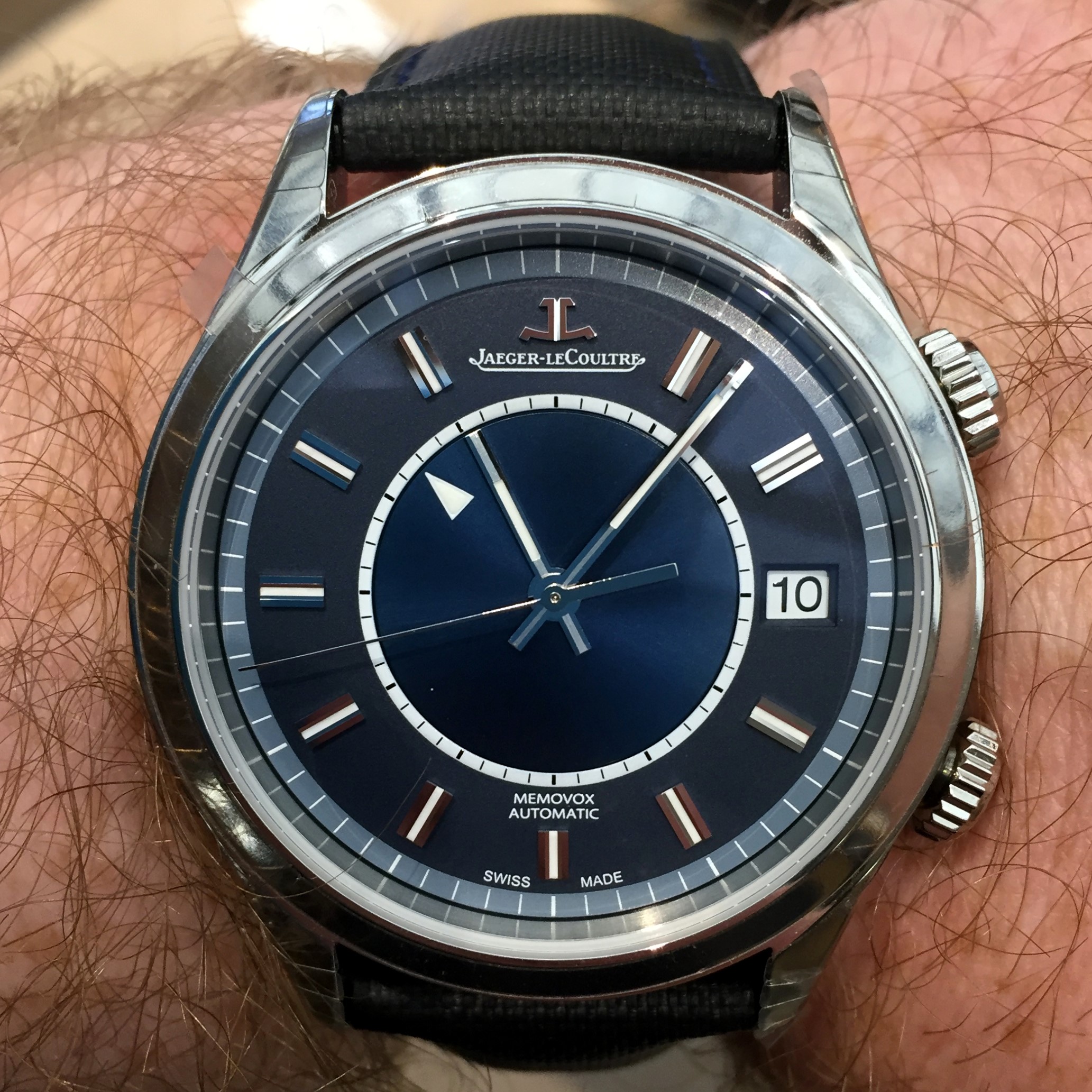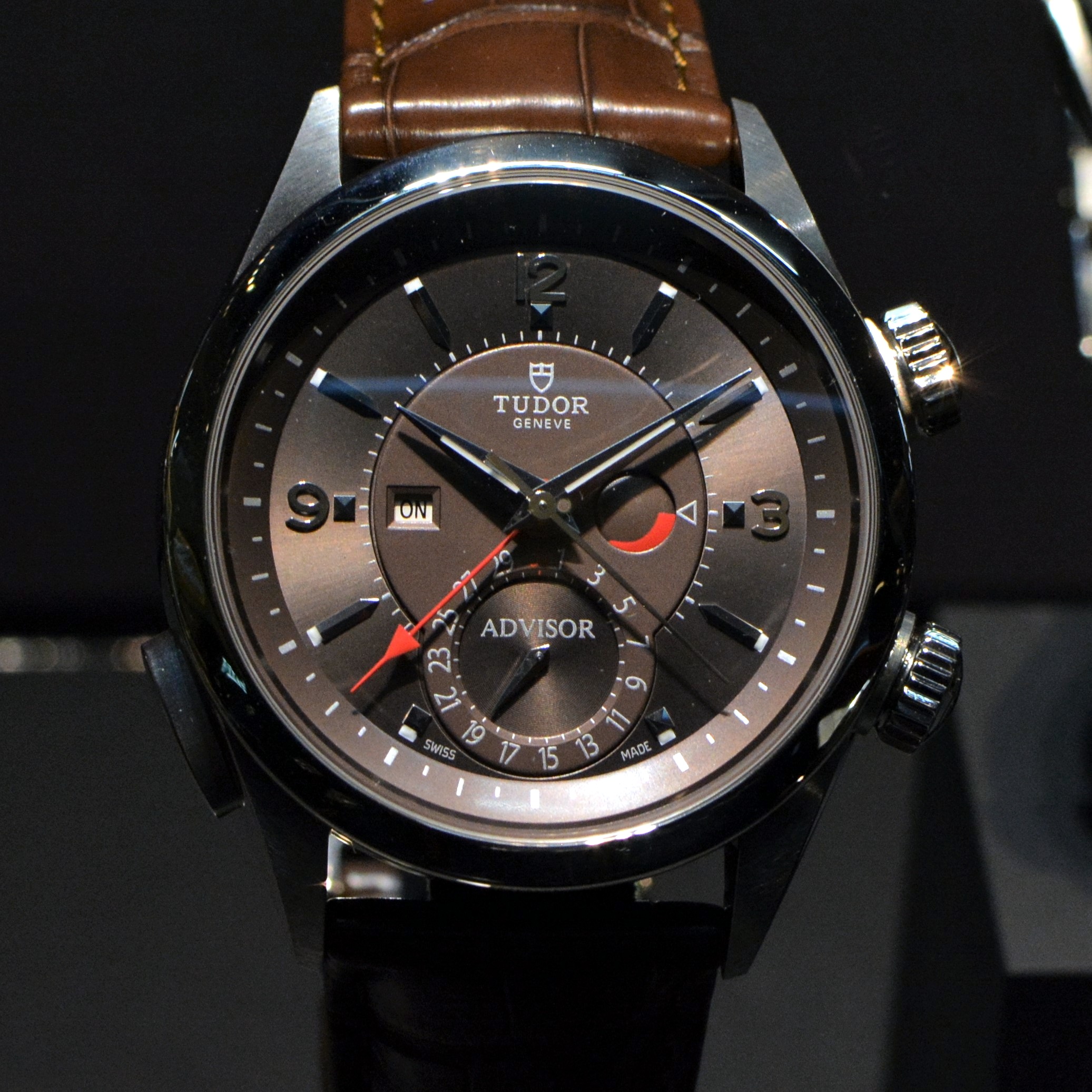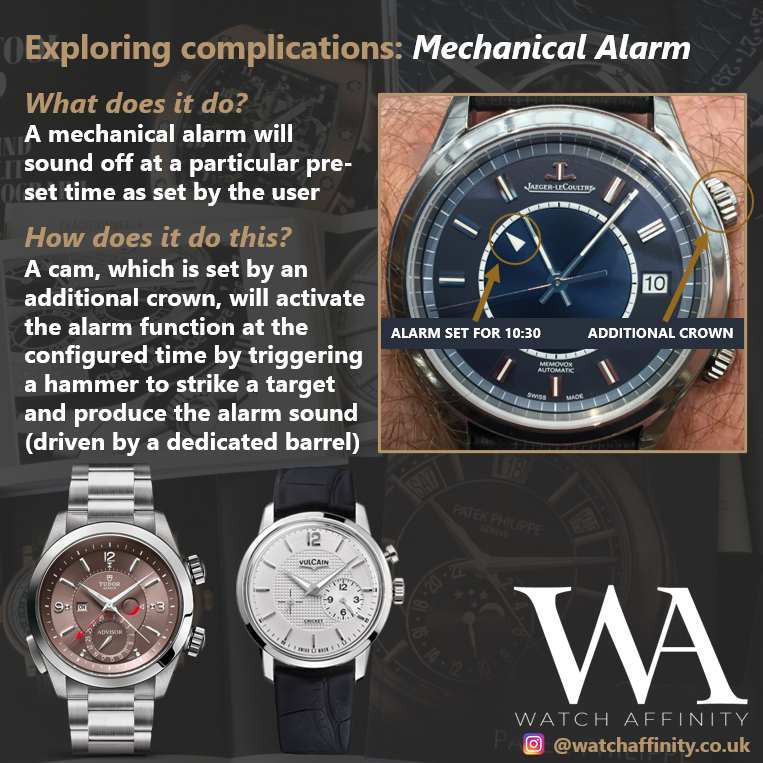It has always struck me as somewhat bizarre that in the world of mechanical watchmaking, one of the most useful everyday complications for a watch to have, that each and every person would be able to use every day, is barely noticeable in the market. Despite its obvious use, it appears to be almost more of a quirk than anything else. In this article we will explore the lesser-seen mechanical alarm and some examples of a notable mechanical alarm watch.
Mechanical Alarm Watches
Whilst pocket watches with alarm functions can be traced back as far as the Seventeenth Century, it was not until 1900 when the first mass-production calibre with mechanical alarm functionality was created by Johannes Dürrstein of Glashütte, who interestingly in 1874 took on responsibility for the general distribution of A. Lange & Söhne. This foundation set the baseline upon which all future mechanical alarm calibres would be built, with the alarm functionality activated by a cam that was hidden away underneath the dial, which could be adjusted to activate the functionality as and when it would be required.
The first time that the mechanical alarm featured in a wristwatch was in 1914, with the release of a timepiece based on Dürrstein’s calibre by Eterna. However, the complexities inherent with introducing this calibre into the small space afforded by a wristwatch: firstly the size of the barrel meant that the alarm would only sound for six or seven seconds, secondly the bezel was vulnerable to being knocked and could easily inadvertently change the time the alarm is set for, and thirdly when the alarm did sound, the vibrations could negatively affect the timekeeping accuracy of piece. Additionally, it was only possible to set the alarm to activate within the following 12 hours, with no implementation of a 24 hour period alarm.
With these issues difficult to resolve at the time, the next evolution in the history of the mechanical alarm watch didn’t arrive until the 1940s with Vulcain. The manufacturer sought to remedy these issues and began work on a new calibre in 1942, which resulted in the release of the popular Vulcain Cricket in 1947. The first instance of the Cricket contained the hand-wound calibre 120, which consisted of not one but two barrels – one to drive the timekeeping functions and a separate, additional barrel purely to drive the alarm. This innovation allowed the alarm to sound for a full 25 seconds, during which the hammer would strike the target just over 50 times every second! Of course, after each time the alarm sounded, the barrel would need to be re-wound to store the energy for the next instance of the alarm sounding – although this was of course a workaround to the 12 hour period alarm!
Both barrels were wound via the crown, one barrel rotating the crown clockwise, and the other barrel by rotating it anti-clockwise. Additional modifications made by Vulcain from original the Eterna piece included the alarm hammer striking a target which was connected to a metal membrane that would resonate to amplify the sound, and the case included sound holes to allow the sound to escape – employing the same concept as is used on string instruments such as a guitar. This video shows the Vulcain Cricket and how the crown winding works, as well as the alarm function:
The Vulcain Cricket gained a bit of fame and notoriety as one was gifted to US President Truman as he left office in 1952. It was also worn by President Eisenhower after him, and President Johnson even bought 200 of them whilst on a visit to Geneva for his team and other guests!
With this golden advertising opportunity, other brands started to manufacture mechanical alarm watches in an effort to dislodge the Cricket from adorning the wrists of successive US Presidents, famously including Jaeger-LeCoultre who released the first Memovox in 1951, Tudor who released the Advisor in 1957, and Seiko who released the Bell-Matic in 1966.
The 1951 Memovox introduced a different approach to displaying the alarm setting, introducing for the first time an indicator on a separate inner dial which was rotated by the second crown, proving itself to be an instant hit. Five years later in 1956, Jaeger-LeCoultre followed this with the first automatically wound mechanical alarm watch, with calibre 815 winding the mainspring automatically for the first time as the alarm remained manually wound.

Jaeger-LeCoultre Memovox Boutique edition with rotating inner dial – alarm set for 10:30
The mechanical alarm even found its way into the world of deep-sea diving in 1959, as it was added to the Jaeger-LeCoultre Deep Sea Alarm and Polaris as a function to remind divers when to return to the surface!
The Tudor Advisor went a different way altogether, and was the first to not use an in-house developed movement, instead opting for an ébauche movement by Adolph Schild. As the popularity of the mechanical alarm increased, this movement went on to be used in almost 500 different alarm watches during the 1950s and 1960s, with brands such as Bulova, Gruen and even Omega producing mechanical alarm watches – indeed Omega’s Memomatic was the only model to offer minute-by-minute setting.

Modern day Tudor Heritage Advisor – alarm set for 7:30
The mechanical alarm suffered heavily during the quartz crisis, and it is fair to say that it never really recovered. Even today, despite the resurgence of mechanical watchmaking during the 1990s, the mechanical alarm on a timepiece has been very much superseded by other devices, and so with a minimal demand for the complication there seems little sense in providing timepieces with a mechanical alarm function, save for the Tudor Heritage Advisor (which introduces a useful on-off function to the alarm) and the tribute Jaeger-LeCoultre Memovox references – neither of which offer an extensive range – and a handful of others including Ulysse Nardin or Cyrus.
That being said, when has obsolescence ever gotten in the way of high horology?! If you ever happen across a mechanical alarm timepiece, be sure to ask the attendant to have a look and exercise the functionality, I can all but guarantee that the worst case scenario is it will put a smile on your face!

We really hope that you have found this informative and helpful – please get in touch and let us know what you think via our Contact page, or via our Instagram.
You might also be interested in:
- Recommended Reading: ‘The Collectibles’ Book by Jaeger-LeCoultre
- Spotlight: Dive Watches
- “It’s complicated”: Acoustic watch complications
- Watch Stationery and Gift Ideas
- Watch Books, Watch Boxes and more at the Watch Affinity Shop on Amazon (commissions earned)
As an Amazon Associate, I earn from qualifying purchases – thank you for your support

